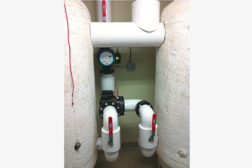Home » wireless technology
Articles Tagged with ''wireless technology''
Winning Team Receives Trip to Seattle and up to $3,500 Worth of Fluke Tools
Read More
Nov. 26, 2014: Early Smart Home Adopters Expect 50+ Wireless Sensors in Their Home by 2018
Data Reliability Was Selected as the Most Important Feature of a Smart Home System
November 26, 2014
Nov. 24, 2014: Wireless Control for Smart Buildings to Reach $434 Million in Annual Revenue by 2023
Convergence of Building Automation, IT, and Wireless Communications Is Driving Growth in This Market
November 24, 2014
Aug. 25, 2014: Wi-Fi Sensors Make Temperature, Humidity Data Logging Universally Accessible
Cloud-Based Monitoring Software and Sensor Solution Allows Users to Monitor Data Anytime, Anywhere
August 25, 2014
Aug. 11, 2014: Wireless Controls for Smart Buildings to Reach 57.4 Million in Shipments by 2023
Intelligent Lighting Is a Key Driver for Wireless Control, Which Can Also Be Used for HVAC and Security
August 11, 2014
May 20, 2014: New Wireless Sensors for Home, Business Automation Connect via Wi-Fi
ConnectSense Is a Platform of Sensors That Monitor Changes in the User’s Environment
May 20, 2014
March 11, 2014: Report Says 50 Million Wireless Smart Homes and Buildings by 2018
Wireless Technologies Have Been Instrumental in Making Smart Homes and Buildings a Reality
March 11, 2014
Oct. 31, 2013: Report Says 100 Million Smart Building Wireless Sensors by 2019
Smart Buildings Will Provide Real-Time Comfort Control, Security, and Lighting
October 31, 2013
Copyright ©2024. All Rights Reserved BNP Media.
Design, CMS, Hosting & Web Development :: ePublishing

